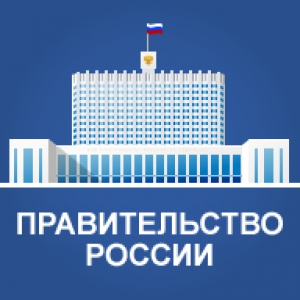The government plans to link exchange rates to world prices

From October 1, the government introduced flexible EXPORT duties on a wide list of goods, with the exception of oil , gas, grain, timber and some other goods supplied outside the EAEU . Duties begin to apply when the DOLLAR exchange rate is above 80 rubles. and amount to 4-7%, depending on the exchange rate. Additional budget revenues from export duties are expected to reach RUB 151 billion. this year and 604 billion rubles. in 2024.
Participants in goods markets on which “exchange rate” export duties are imposed believe that the success of the updated mechanism depends on the choice of indicator for calculating world prices and the cut-off price level , Kommersant found out. The main agencies that publish price benchmarks for a number of products are located in unfriendly countries. “In CHINA, almost all goods are traded on the stock exchange, including even chicken eggs ,” says the publication’s interlocutor. “Therefore, it is important which benchmarks and sites will be used. For example, gold is traded on the LBMA in London , but the Shanghai Gold Exchange is gaining increasing popularity, where it may soon be the main price indicator, according to some experts.”
For the main goods of the agricultural sector - grain, sunflower oil and meal - export duties from 2021-2022 depend on the ruble-dollar exchange rate and on the price level at which exports are carried out , recalls Daria Snitko, vice-president of Gazprombank, HEAD of the Center for Economic Forecasting. The procedure, in force since October 1, determined duties on other oils and meal, SUGAR , and a number of food industry products, depending on the exchange rate, but established as a percentage of the customs value.
“Today there are no duties that are calculated on world prices for food products. This is largely due to the fact that there are no such global benchmarks in the context of increasing fragmentation of world markets for all types of raw materials, Snitko said. — Since 2022, the Gazprombank Price Index Center has been working to create indicators of export prices on the basis of Russian ports for a wide range of goods from oil to sunflower oil. These indicators are obtained by surveying market participants about transactions using a methodology that meets best global practices.”
Now the Bank of RUSSIA is working on a methodology for introducing Russian benchmarks for Russian export goods, and also, together with commodity exchanges, is organizing exchange auctions for goods, including agricultural products, commented Oksana Lukicheva, an analyst at Finam Financial Group. For example, NTB (part of the Moscow Exchange) already holds auctions, based on the results of which price indices are formed for a wide range of agricultural products. NTB data showed that auctions are held for a wide range of agricultural products - wheat, sunflower, sugar, corn, rapeseed, soybeans, sunflower oil, barley, the expert said. Based on the obtained price indices, the export duty on goods is calculated.
As a result, it turns out that the initiative to take into account world prices completely contradicts the direction of the ongoing work of the Bank of Russia and Russian commodity exchanges, Lukicheva noted. “At the same time, price indices formed on the basis of auctions reflect the dynamics of world prices, since Russian exporters sell in relation to world prices, and not in isolation from the world market,” the expert said. “Therefore, it is unlikely that changing the current methodology for calculating export duties will bring tax breaks to companies; it will only further confuse an already difficult situation.”
Read together with it:
- Боливия экспортирует говядину на сумму 797 миллионов долларов и вводит новые цифровые сертификаты для внешней торговлиЭкспорт говядины из Боливии в период с 2021 по 2025 год достиг 797 миллионов долларов. Китай является основным рынком сбыта этого мяса, на который приходится 74% продаж, сообщила Карина Серрудо, генеральный директор Национального таможенного управления. Параллельно с этим ведомство включило сертификат безопасности экспортных пищевых продуктов для говядины в систему «Единое окно для внешней торговл...
- Поголовье свиней в Бразилии продолжает растиТакже наблюдался рост убоя свиней на 1,2%, достигнув рекордного уровня в 2024 году, хотя рост сектора замедлился. Экспорт свинины также достиг исторического максимума. По географическому распределению Толедо (штат Парана) сохранил лидерство по производству свинины среди 5487 муниципалитетов, где ведётся свиноводство, на долю которого приходится 2,2% от общего поголовья (95......
- Губернатор назвал меры по борьбе с топливным кризисом в Хабаровском краеДемешин поручил наладить поставки бензина и дизеля для Советского-Гаванского и Ванинского районов с двух НПЗ, которые работают в Хабаровском крае. Дефицит топлива на берегу Татарского пролива наблюдается с начала сентября Губернатор Хабаровского края Дмитрий Демешин собрал рабочее совещание для борьбы с топливным кризисом в Ванинском и Советско-Гаванском районах. Он написал это в своем телеграм-ка...
- Bloomberg узнал о плане G7 значительно ужесточить санкции против РоссииНовый пакет санкций будет включать меры, в частности, против энергетики, финансов и военной промышленности, а также крупнейших нефтяных компаний России. Разработку пакета G7 планирует завершить в октябре, выяснил BLOOMBERG Страны «Большой семерки» (G7) приближаются к соглашению о значительном ужесточении санкций в отношении России, сообщает агентство Bloomberg со ссылкой на проект заявления. «Мы с...


